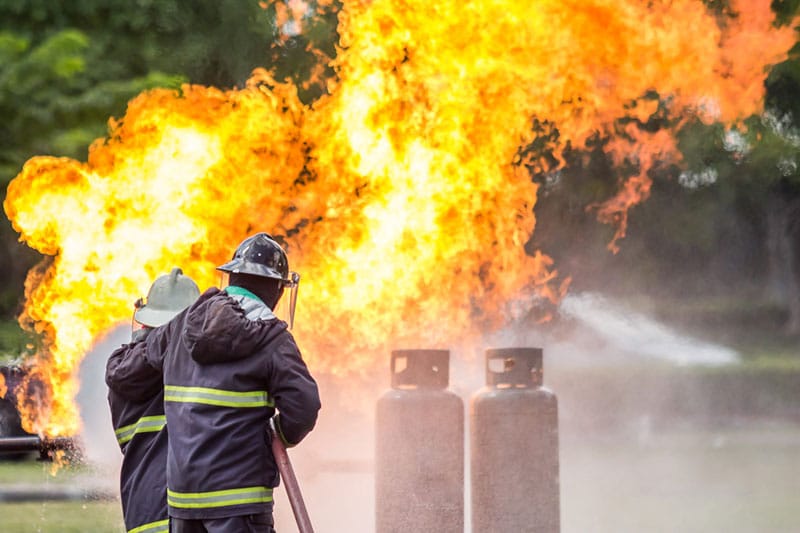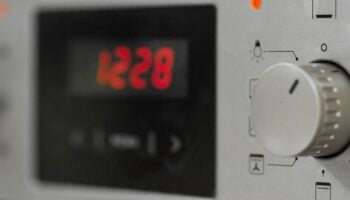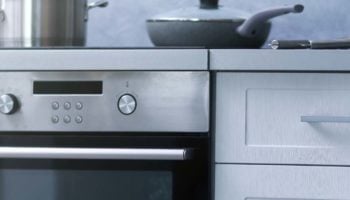Ovens are one of the essential tools in the kitchen. When properly installed, ovens are pretty convenient and easy to use. However, ovens are also prone to gas leaks that can cause a severe explosion and other dangers if not fixed at the right time.
Before we start, if you believe gas is leaking from your oven, ensure all the knobs are properly turned off.
If you feel light-headed, get some fresh air and later check the oven for a gas leak with a carbon monoxide detector.
The best way to remain safe is to learn how to tell when there is a gas leak and fix it, which is why I’ve prepared a detailed insight into detecting a gas leak, what to do when you discover one, and the symptoms you can experience after breathing the gas for long periods.
Ready? Let’s dive in!
How to Detect a Gas Leak
If you suspect your oven is leaking gas, you first want to confirm your suspicion to take action immediately after. Here are some simple ways to detect a gas leak in your home.

#1 Use a Gas Leak Detector
In my experience, using a gas detector is the best way to identify when your oven is leaking gas. Gas detectors are designed to sound an alarm when the presence of carbon monoxide exceeds safety levels.
Experts recommend placing gas detectors at a height of 70cm or lower. However, it should be noted that not all detectors are designed to detect natural gas. Carbon monoxide is heavier than oxygen, so please ensure you get a model that can detect all types of gases.
#2 Use Test Strips
I find that Acetate test strips are the cheapest way to detect when your oven is leaking gas. Acetate strips change color when moved near the suspected leak and are mostly used in the oiling business to detect the presence of gases.
#3 Do a Bubble Test
The bubble test is another common way to tell whether your oven is leaking gas. To do the test, put a solution of water and dish soap inside an atomizer, shake the container and then spray the solution on the gas line and any other places where a leak could originate.
The bubbles will be a result of gas pushing through the soapy water. After identifying the problem, my usual advice is to turn off the gas and fix it before using the oven again.
#4 Look at the Color of the Flame
A properly working oven will have burners with a pure blue flame. When I see orange or yellow on the flame, I know the gas supply is abnormal.
#5 Check for Sulfur Smell
Using your nose to detect sulfur is also very effective in telling whether your oven is leaking gas. While naturally odorless, gas meant for home use is generally full of additives such as mercaptan to ensure people’s sense of smell can easily detect it. Typically, the scent will be much like rotten eggs.
Ensure you contact a professional immediately if you suspect the presence of a gas leak. You can also use the above steps to help you identify the leakage and act promptly.
How to Prevent a Gas Leak
The best way to prevent an oven gas leak is to perform the required routine maintenance on anything that uses gas, such as fireplaces, stoves, and furnaces. Check for signs of breakage, corrosion, warping, or any other default in the gas line.
The most recommended time to conduct maintenance is two or three times a month. Moreover, you can also have a professional company check for any leakages and put safety measures in your home. A professional will also provide you with an expert understanding of the gas system in your home and give recommendations for any installation or repairs needed.
Also, you can replace the valves and old pipes yourself. Replacing bad valves and pipes is vital as it will help prevent corrosion or faults that can occur due to prolonged usage. What’s more, you can also periodically turn off all the appliances and proceed to check your gas meter. If there is no leakage, it should remain inactive.
If you want to get any replacement part – or see how much one would cost – click to enter your model number in the search bar below. Our partners at AppliancePartsPros stock almost every part with free guides on how to install them.

What’s the Best Way to Fix Gas Leaks in Your Home?
You can follow several steps to fix gas leaks in the shortest time possible.
Step #1: Remove Outer Covers and Turn Off the Gas
It is imperative to understand that dealing with gas is highly dangerous, and you should ensure you turn it off entirely before you start repairs. After doing so, remove the gas line covers to access the gas pipes. Ensure you put on a mask and gloves while conducting the repairs.
Step #2: Disconnect the Gas Line
Identify the gas regulator and disconnect the connecting gas line to lower the pressure. Typically, the main reason for gas leaks is high pressure along with the connecting hose.
Step #3: Clean the gas line
Now that you have disconnected the gas line, the next step should be to ensure the hose is free from any gas residue. Crack the line fittings to relieve pressure using a wretch, and then clean the pipe. It’s recommended that you use acetone to clean the tube to ensure you remove impurities that would lead to another gas leak.
Step #4: Reconnect the Gas line
Reattach your gas line and ensure that it fits loosely to avoid new leakages. Hold the grip point firmly with rubber tape and ensure that the area around the leak is completely sealed.
Also, check the angle lines around the rubber to ensure that the high pressure will not affect the low-pressure line.
Step #5: Apply Epoxy
If you want to prolong the gas line’s life, you should apply epoxy to the gas line and leave it overnight to dry.
Step #6 Test the Gas Line
If you follow the above steps correctly, your gas line should be okay. However, assuming that the gas line is not fixed until you test it again would be best. Turn on the gas and use any of the above detection methods to check for leaks.
Repeat the process until there are no more leaks. Place the covers back after you are confident that the gas line is okay and conduct regular maintenance to keep it safe.
Step #7: Contact a Professional
You can always seek the services of a certified plumber if the above steps do not work or if you believe the situation is beyond your expertise. Hiring a professional will give you the confidence to know that the problem has been resolved and that no harmful gases are leaking into your home.
What Causes a Gas Leak?
Now that you’ve either confirmed or ruled out a gas leak in your home, I recommend you learn the causes of the issue so you can be on the lookout in the future.
Loose Connections
The first thing you should look for if you suspect a gas leak is a loose connection. Check the gas connection to your stove to ensure that there are no loose ends. Hose and piping connections tend to loosen, especially when there is an abrupt change in weather.
One of the easiest ways to spot the leak is to use a soapy towel and get the gas connection wet where it hooks to the oven. If you spot bubbles anywhere, there’s the leak.
A Faulty Bake Igniter
Another possible reason why your oven is leaking gas is that you have a faulty bake igniter. When you turn your oven on, the bake igniter starts to heat up, and once it reaches the right temperature, it opens the gas valve and creates a flame.
However, if your bake igniter is faulty, it won’t get hot enough to start a flame, and the gas will escape through the valve. If you suspect your bake igniter is at fault, it’s critical that you look for a replacement as soon as possible.
Corroded Pipes
Spilling water and moisture in your room can drain down the pipes, leading to corrosion of the hose pipes connecting to your stove. To ensure your pipes do not corrode, you must clean the entire stove, including the gas lines.
Although the problem rarely occurs, it can be catastrophic when it happens. Gas can fill the room, potentially resulting in a severe explosion when ignited.
Improper Oven Installation
Gas can easily escape to the room if the cooker is installed incorrectly, so please ensure you have your gas installed by a professional. You will avoid a gas leak that can easily lead to adverse consequences.
What are the Dangers of a Gas Leak?

Natural gas is relatively safe and convenient to use compared to other types of gas. It provides more than half of homes in the United States to cook and perform numerous tasks.
Even so, a natural gas leak can be harmful to your health in case of a leakage. It can also explode and cause severe damage to your home. The Center for Disease Control and Prevention indicates that more than 50,000 Americans are admitted to hospitals annually with elevated carbon monoxide exposure symptoms. Here are some of the advanced symptoms of carbon monoxide exposure.
- Dizziness or lightheadedness
- Nausea
- Chest pains or breathing difficulties
- Headache
- Ringing in the ears
- Nosebleeds
- Eye irritation
- Depression and mood changes
A gas leak in your home reduces the oxygen in your room, leading to the above symptoms.
Addressing a Gas Leak in Your Home
There is no doubt that knowing how to detect a gas leak in your home is critical to ensuring you prevent a disaster from happening to your family. If you suspect a gas leak in your home, follow the above steps to detect the source of the leak and conduct repairs or contact your utility company.
Found this article helpful? Check out our related articles and guides below, and consider subscribing to our newsletter.
Have a great day!
-Craig.







